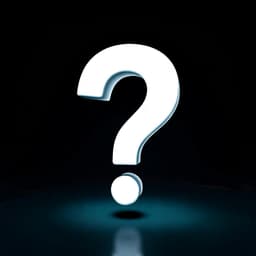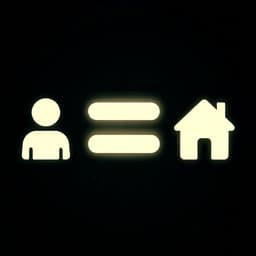what time is breakfast
in Spanish¿A qué hora es el desayuno?
/ah keh OH-rah ess el deh-sah-YOO-noh/
This is the most direct, common, and universally understood way to ask about the time for breakfast. It's suitable for any situation, from a hotel to a friend's house.

Asking about meal times is a key part of travel. A simple, polite question like '¿A qué hora es el desayuno?' will get you the information you need.
💬Other Ways to Say It
¿A qué hora se sirve el desayuno?
/ah keh OH-rah seh SEER-veh el deh-sah-YOO-noh/
This translates to "At what time is breakfast served?" It uses a more passive-sounding construction ('se sirve') which is very common in Spanish for talking about services. It's slightly more formal but used everywhere.
¿Me podría decir a qué hora es el desayuno?
/meh poh-DREE-ah deh-SEER ah keh OH-rah ess el deh-sah-YOO-noh/
This means "Could you tell me what time breakfast is?" It's a very polite and slightly more formal way to ask, softening the question.
¿Hasta qué hora es el desayuno?
/AHS-tah keh OH-rah ess el deh-sah-YOO-noh/
This specifically asks, "Until what time is breakfast?" It's not a general question but one focused on when the breakfast service ends.
¿Cuándo es el desayuno?
/KWAN-doh ess el deh-sah-YOO-noh/
Meaning "When is breakfast?", this is a bit more general. While it can mean "what time," it can also be asking about the day or the general timing of the event, not just the specific hour.
Disculpe, ¿el desayuno a qué hora es?
/dis-KOOL-peh, el deh-sah-YOO-noh ah keh OH-rah ess/
This is a common conversational reordering: "Excuse me, breakfast, what time is it?" It front-loads the topic ('el desayuno') before asking the question, which is a very natural way of speaking.
🔑Key Words
Key Words to learn:
📊Quick Comparison
Here's a quick comparison of the most common ways to ask about breakfast time, helping you choose the best one for your situation.
| Phrase | Formality | Best For | Avoid When |
|---|---|---|---|
| ¿A qué hora es el desayuno? | Neutral | Almost any situation; it's the direct, all-purpose standard. | Never wrong, but a more polite version exists for very formal settings. |
| ¿A qué hora se sirve el desayuno? | Neutral/Slightly Formal | Service contexts like hotels and restaurants; it sounds very natural. | Asking a close friend or family member; it might sound a bit stiff. |
| ¿Hasta qué hora es el desayuno? | Neutral | Specifically asking when breakfast service ends. | You need to know the start time, not the end time. |
| ¿Me podría decir...? | Formal | Being extra polite, especially in upscale places or when interrupting. | A quick, casual question to a peer; it can be overly formal. |
📈Difficulty Level
The word 'desayuno' (deh-sah-YOO-noh) has a 'y' sound that can be tricky for some, but otherwise, the sounds are straightforward for English speakers.
The sentence structure is very simple and direct. It's a basic 'Question Word + Verb + Subject' pattern.
The question itself is simple, but being aware that breakfast times and types vary culturally is helpful for managing expectations.
Key Challenges:
- Pronouncing 'desayuno' smoothly
- Remembering to always include 'el' before 'desayuno'
💡Examples in Action
Buenos días, disculpe, ¿a qué hora es el desayuno?
Good morning, excuse me, what time is breakfast?
Mamá, ¿hasta qué hora podemos tomar el desayuno mañana?
Mom, until what time can we have breakfast tomorrow?
Llamo para confirmar mi reserva. ¿Me podría decir a qué hora se sirve el desayuno?
I'm calling to confirm my reservation. Could you tell me what time breakfast is served?
El desayuno es de 7 a 10, pero el café está disponible desde las 6.
Breakfast is from 7 to 10, but coffee is available from 6.
🌍Cultural Context
The Moveable Feast: Breakfast Times Vary
Breakfast times can differ significantly across the Spanish-speaking world. In business-focused cities in Latin America, breakfast might be served early, around 7 AM. In Spain, it's common to have a small first breakfast early and a larger second one (almuerzo) around 10:30 or 11 AM.
What's in a 'Desayuno'?
Don't assume 'desayuno' means eggs and bacon! In Spain or Argentina, it's often light: coffee with toast or a pastry ('medialuna'). In Mexico or Colombia, it can be a very large, savory meal with dishes like 'chilaquiles' or 'arepas con huevo'.
Lunch is King
In many Spanish-speaking cultures, the main meal of the day is lunch ('almuerzo' or 'la comida'), not dinner. This means breakfast is often treated as a smaller, simpler meal to start the day, with the big culinary event happening in the early afternoon.
❌ Common Pitfalls
Using 'Qué Tiempo' instead of 'Qué Hora'
Mistake: "¿Qué tiempo es el desayuno?"
Correction: ¿A qué hora es el desayuno?
Forgetting the Article 'el'
Mistake: "¿A qué hora es desayuno?"
Correction: ¿A qué hora es el desayuno?
Confusing 'Es' with 'Está'
Mistake: "¿A qué hora está el desayuno?"
Correction: ¿A qué hora es el desayuno?
💡Pro Tips
Always Start with a Polite Opener
When asking a stranger, like hotel staff, it's always best to begin with a polite word like 'Disculpe' (Excuse me), 'Perdón' (Pardon me), or 'Buenos días' (Good morning). It's a small touch that makes a big difference.
Listen for Prepositions in the Answer
The answer will likely include 'de... a...' (from... to...) or 'desde... hasta...' (from... until...). For example, 'El desayuno es de siete a diez' (Breakfast is from seven to ten). Listening for these key words will help you understand the timeframe.
Specify the Day if Needed
Weekend breakfast times can differ from weekdays. To be specific, you can add the day: '¿A qué hora es el desayuno los sábados?' (What time is breakfast on Saturdays?).
🗺️Regional Variations
Spain
Breakfast is often a two-stage affair. A small, early 'desayuno' (coffee and toast) might be followed by a larger 'almuerzo' around 11 AM. Asking about 'el desayuno' will usually refer to the first, lighter meal.
Mexico
'El desayuno' is a very important and substantial meal, often featuring spicy and savory dishes like chilaquiles or huevos rancheros. It's common for people to go out for breakfast meetings. The colloquial use of '¿A qué horas?' (plural) is very common.
Argentina
Breakfast is typically very light, consisting of coffee ('café con leche') and pastries, especially croissants called 'medialunas'. The question is the same, but the cultural expectation for the meal is different.
💬What Comes Next?
After you ask the time
Es de siete a diez de la mañana.
It's from seven to ten in the morning.
Perfecto, muchas gracias.
Perfect, thank you very much.
They give you the time and location
Se sirve en el restaurante del primer piso.
It's served in the first-floor restaurant.
Entendido. ¿El desayuno está incluido?
Understood. Is breakfast included?
You've arrived for breakfast
Buenos días, ¿su número de habitación?
Good morning, your room number?
Es la trescientos cinco.
It's three-oh-five.
🔄How It Differs from English
The biggest difference is grammatical. In Spanish, you must use the definite article 'el' before 'desayuno', making it literally 'the breakfast'. English drops the article and just says 'breakfast'. Also, the Spanish question structure 'A qué hora' ('At what hour') is more specific than the English 'What time'.
🎯Your Learning Path
➡️ Learn Next:
Is breakfast included?
This is the logical next question to ask at a hotel after finding out the time.
What time is lunch/dinner?
Expands your ability to ask about all meals, using the same sentence structure.
Where is the restaurant?
Once you know the time, you need to know the location.
A table for two, please.
This helps you continue the interaction once you arrive at the dining area.
✏️Test Your Knowledge
💡 Quick Quiz: what time is breakfast
Question 1 of 3
You're at a hotel in Mexico and want to ask the front desk staff the most standard, universally understood question for what time breakfast is. What do you say?
Frequently Asked Questions
What's the difference between '¿A qué hora?' and '¿Cuándo?' for asking about breakfast?
'¿A qué hora?' specifically asks for the time on the clock. '¿Cuándo?' is more general and means 'When?'. While you can use '¿Cuándo es el desayuno?', it's less precise and more informal. For a specific time, always use '¿A qué hora?'.
Why do I have to say 'el desayuno'? Can't I just say 'desayuno'?
In Spanish, nouns for meals like breakfast (desayuno), lunch (almuerzo), and dinner (cena) are almost always used with a definite article ('el' or 'la'). Leaving it out sounds very unnatural to a native speaker, similar to saying 'I go to store' instead of 'I go to the store' in English.
How do I use this same structure for lunch and dinner?
It's easy! Just swap out the word 'desayuno'. For lunch, ask '¿A qué hora es el almuerzo?' (or 'la comida' in some regions like Spain and Mexico). For dinner, ask '¿A qué hora es la cena?'.
Is it rude to ask this question as soon as I check in?
Not at all! It's a perfectly normal and expected question for any traveler. Hotel staff are asked this constantly. In fact, they will often tell you the breakfast times proactively when you check in.
What's the difference between 'desayuno' and 'almuerzo'?
This can be confusing because it varies by region. 'Desayuno' is always the first meal of the day. 'Almuerzo' can mean 'lunch' (the main midday meal), but in Spain and parts of Mexico, it can also refer to a mid-morning snack or second breakfast, eaten around 11 AM.
Can I just say '¿Desayuno?' and point to my watch?
Yes, in a pinch, people will absolutely understand you. It's not grammatically correct, but for basic communication when you're stuck, it will work. However, learning the full phrase '¿A qué hora es el desayuno?' is much better and shows more effort.
📚Continue Learning Spanish Phrases
Explore More Phrases in These Categories
Find similar phrases to expand your Spanish vocabulary:
Want to Learn More Spanish Phrases?
Browse our complete collection of Spanish phrases organized by situation, from basic greetings to advanced conversations. Perfect for travelers, students, and anyone learning Spanish.
View All Spanish Phrases →



